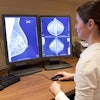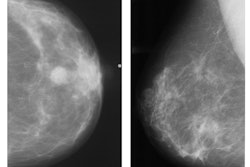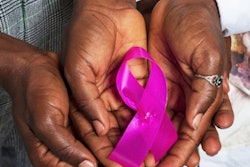
Women who only speak Spanish have a 27% less likelihood of getting a screening mammogram than English speakers, according to a study presented at the American College of Surgeons (ACS) Clinical Congress 2020. And Spanish speakers aren't the only ones -- by and large, women who speak limited English are less likely to receive breast cancer screening.
The mammography rate of women with limited English-language proficiency was compared with English-speaking women by a research team led by Dr. Jose L. Cataneo, a general surgery resident at the University of Illinois at Chicago/Metropolitan Group Hospitals. They used data from the National Health Interview Survey for their analysis.
The researchers found that women who didn't speak much English had much lower breast screening rates.
"The impact of language barriers on screening mammography was previously unknown from a national database," Cataneo said. "It is important because approximately 67 million people in the United States speak a language other than English, and 41 million of those speak Spanish."
Mammography screening by the numbers
Screening mammography is currently the gold standard for detecting breast cancer. The age range and the frequency vary depending on the governing body, but even still, most clinicians recommend screening mammography to catch cancer early when it's most treatable.
In the U.S., does speaking exclusively or mostly a language besides English affect mammography screening uptake? That's precisely what Cataneo and colleagues sought to find out. They used the National Health Interview Survey, an annual survey of U.S. civilian, noninstitutionalized residents. Only using the year 2015, the researchers included 9,653 women ages 40 to 75. Among those, 1,040 had limited English-language proficiency and 712 only spoke Spanish.
The researchers used statistical modeling to match the English speakers with the limited English speakers by age, race-ethnicity, insurance status, and family income. Of the group who spoke limited English, the overall rate of screening mammograms was 12% less than for proficient English speakers: 78% versus 90%. Dividing women into different age groups -- 40 to 50, 45 to 75, and 50 to 75 -- still resulted in women with limited English getting fewer screening mammograms.
Cataneo and colleagues also found speaking only Spanish produced a lower probability of getting a screening mammogram: for every 100 English-speaking women who get a screening mammogram, 73 Spanish-only speakers will get one.
On top of that, in the survey, 209 women reported never having a mammogram, which if extrapolated to the entire U.S. female population, equals 450,000 women in the country who are eligible for a screening mammogram but may not have had one, according to statistical software Cataneo used.
Why is it that limited English results in less screening uptake? It likely has to do with poverty, lack of health insurance, and fear, according to the researchers. Possible solutions include more education about breast health, the importance of mammography screening, and advancement in treatment options.
In addition to holding educational seminars in languages other than English, making online mammography scheduling available in other languages could also help, the researchers added.



















